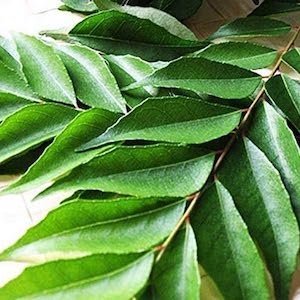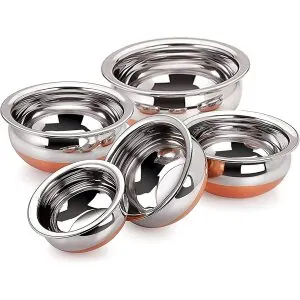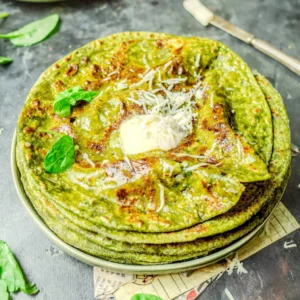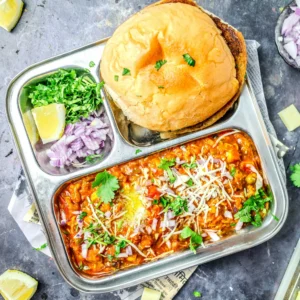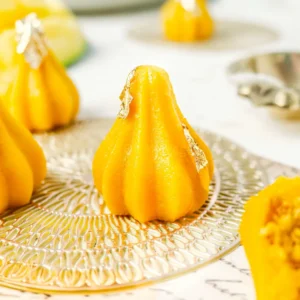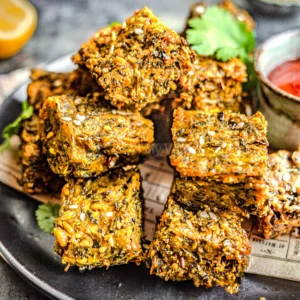Mosaranna, South Indian Curd Rice
Healthy, easy to cook, and packed with traditional flavours: Mosaranna (curd rice) is a cooling combination of fluffy cooked rice, cooling yoghurt, and a crunchy, spicy, tempering.
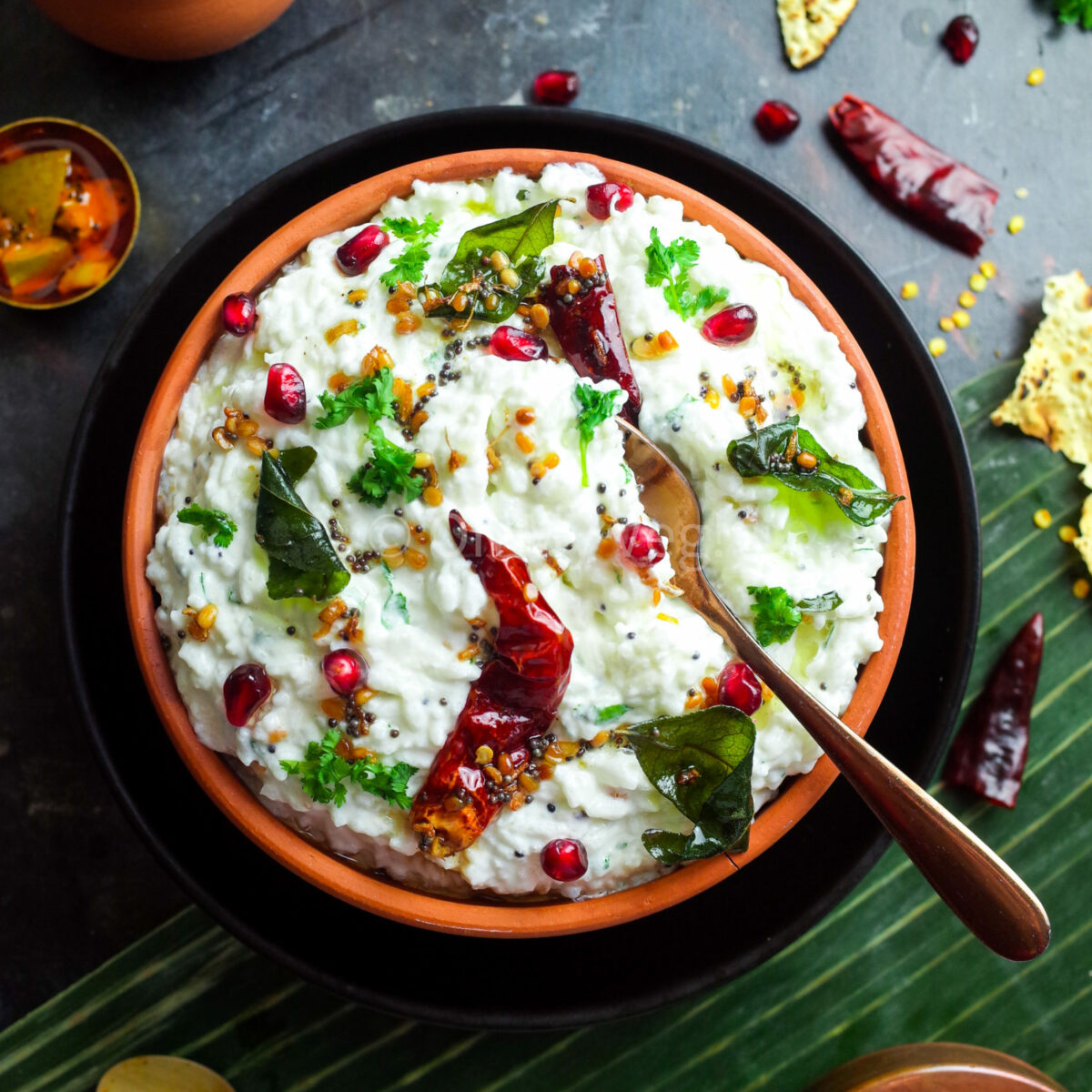
As one of the most in-demand comfort dishes of South India, it unites the southern states. Although the dish goes by many names (Mosaranna in Karnataka, dahi bhaat in Maharashtra, daddojanam in Andra Pradesh, and thayir saadam in Tamil Nadu) and may vary slightly depending on the region and family, they each have remarkably similar ingredients and methods.
There’s a reason mosaranna is such a crowdpleaser: Rich in probiotics, it’s famously good for digestion. Plus, during the blistering heat of Indian summers, the cool, refreshing flavour offers much-needed respite. That’s why the dish is eaten cold, just like chitranna (lemon rice).
Loaded with authentic South Indian flavours, curd rice is topped with crispy urad dal, sharp and spicy mustard seeds, ginger, citrusy curry leaves, and fiery dried rice chilis, plus bursts of juicy tart pomegranate.
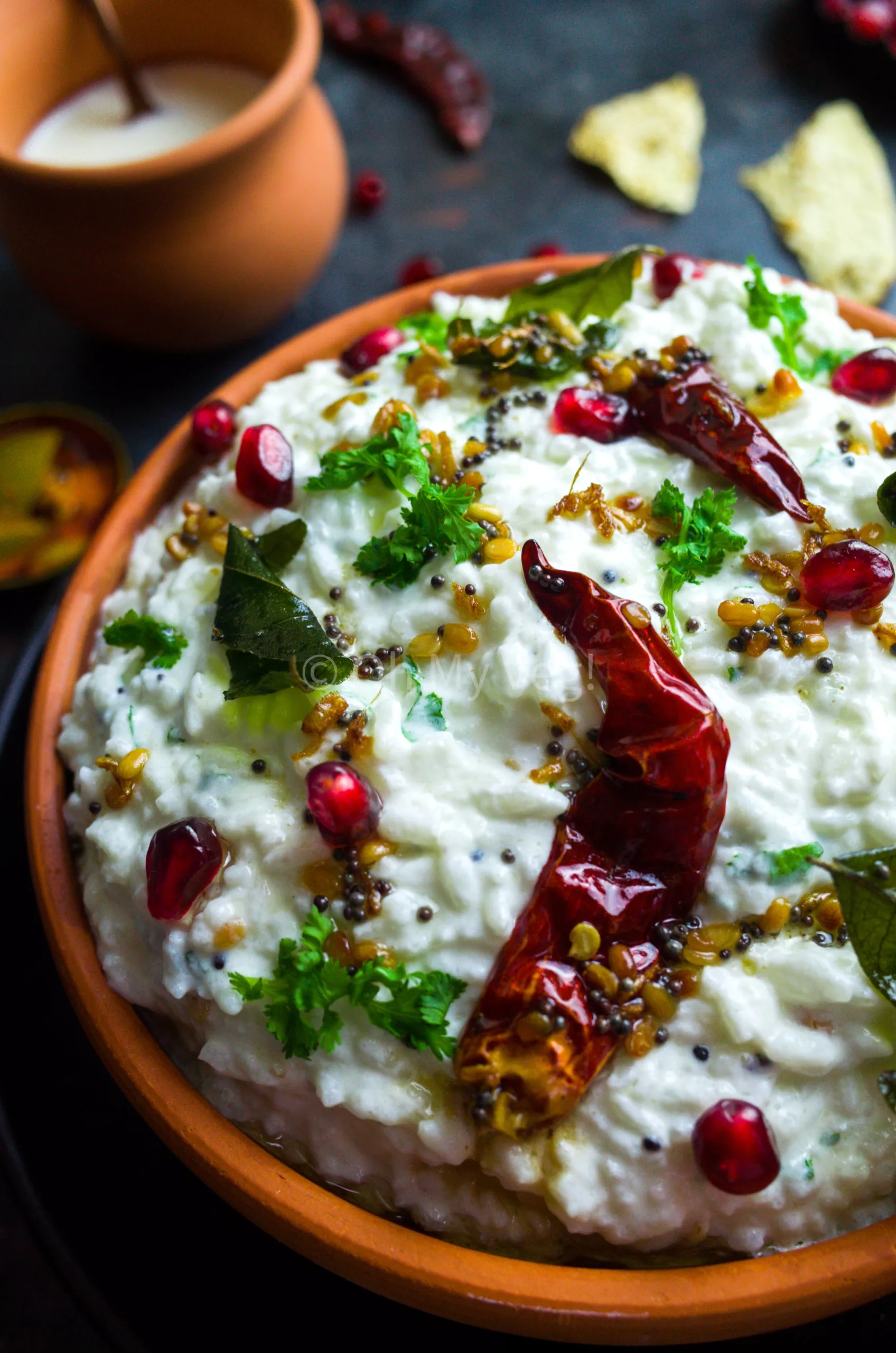
🍚 Ingredients for Mosaranna
If you cook South Indian dishes regularly, you’ll have all of these ingredients to hand. If not, no problem — a trip to your local Indian market will have everything you need and more.
The ingredients for dahi bhaat can be split into two categories: base ingredients to make the creamy rice, and ingredients for the tempering.
- Rice is, of course, the main ingredient of mosaranna! You’ll want to choose a fragrant, short-grained variety like sona masoori and ambe mohar.
- Yoghurt adds so much creaminess and a slightly sour tang to the rice. Use natural set yoghurt or Greek yoghurt for the best taste.
- Milk adjusts the consistency of the mosaranna — you can use water instead if you prefer.
- Salt is a must for seasoning the rice and enhancing the other spices.
- Groundnut oil (peanut) is mild and surprisingly neutral, with an almost indiscernible nutty undertone. It’s used for making the tempering.
- Black mustard seeds are spicy and punchy.
- Split urad dal is nutty and deliciously crunchy when fried.
- Ginger is warm and slightly pungent. Grated fine, it works its way through the whole dish.
- Curry leaves are a MUST. They have a delightful citrusy flavour that’s impossible to replicate. Always use fresh ones; dried ones are almost tasteless.
- Dried red chillis bring a touch of heat. You can adjust the fierceness depending on which variety you use; byadgi chillis are the most popular.
- Asafoetida tastes of garlic and onion. It’s an excellent way to add those flavours while making curd rice WITHOUT onion and garlic (great for Jains!).
- Fresh coriander lifts the mosaranna with fresh, herby, and lemony flavour.
- Pomegranate is scattered over the top as a garnish and offers bursts of juicy tartness.
🔄 Mosaranna Variations and Allergies
One of the best things about dahi bhaat is how much fun you can have with the ingredients!
I adore the classic, traditional flavours in this mosaranna recipe. But why not switch things up with a few of these suggestions?:
- Add grated vegetables such as carrots, beetroots, cucumber, bell peppers, or onion to mosaranna. It adds colour and nutrition to the yoghurt rice — plus, it’s a great way to work in extra veggies.
- Want extra spicy mosaranna? Add freshly chopped green chillis for a more fruity kind of heat.
- Add butter and cream with yoghurt and milk to make the curd rice UNBELIEVABLY creamy.
- Increase the crunch factor by adding nuts. Try adding halved cashews or peanuts at the tempering stage.
- Make the dahi bhaat healthier by substituting rice for quinoa, cauliflower, or brown rice.
Plus, it’s easy to adapt mosaranna to align with various dietary requirements and preferences. For example, to make curd rice vegan, switch dairy-based yoghurt and milk to a vegan version. I recommend soy milk and yoghurt — it has a neutral flavour and creamy consistency. Alternatively, make curd rice with homemade peanut curd (very popular in India!) for a more distinctive taste.
Luckily, curd rice is 100% nut free and soy free by default. Moreover, to make mosaranna gluten free, use gluten-free asafoetida (most brands blend pure hing with gluten).
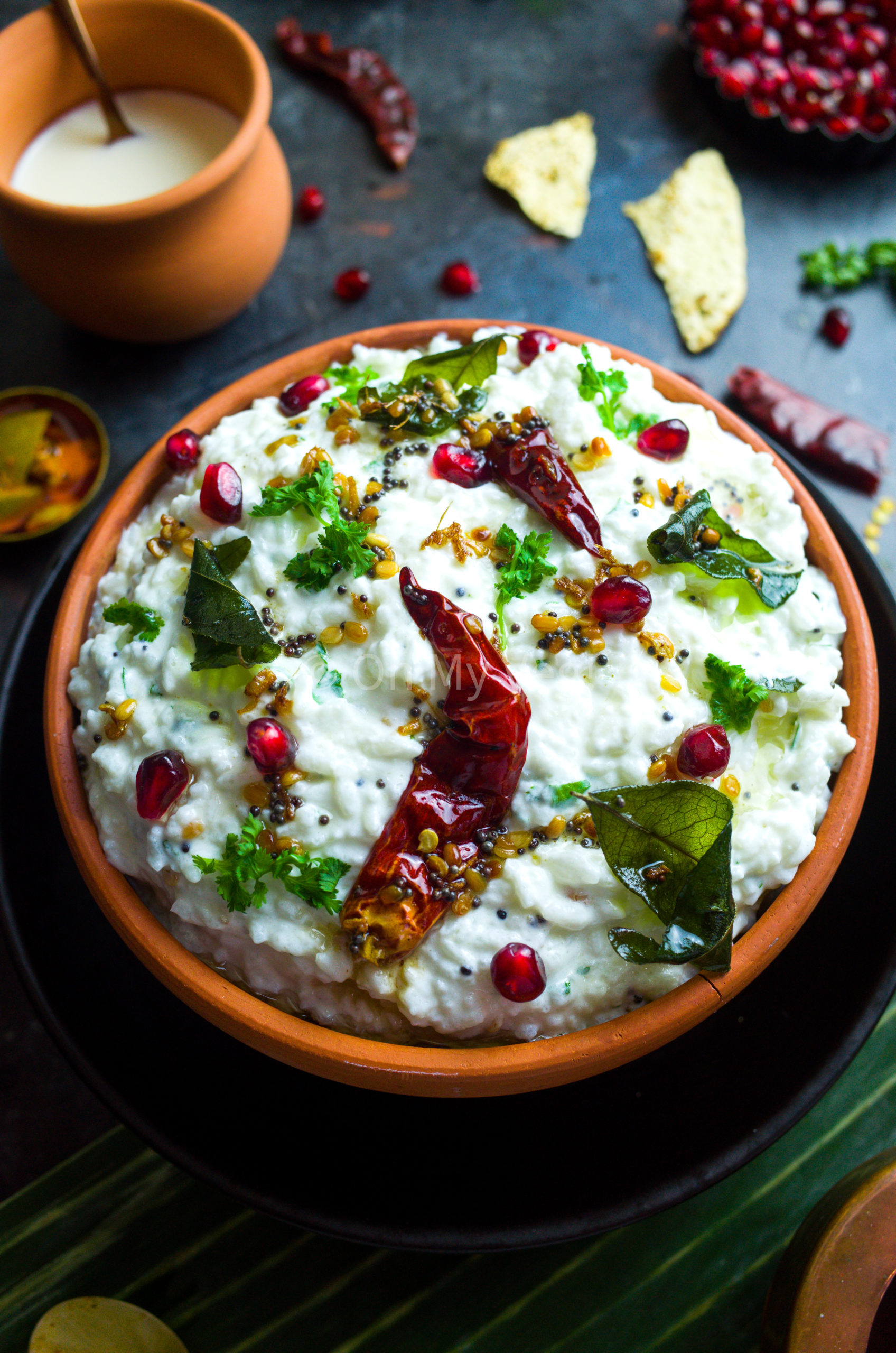
🧑🍳 How to Make Curd Rice
Making restaurant-standard, drool-worthy mosaranna is shockingly easy — especially if you have leftover cold rice already made. Even if you don’t, there’s less than five simple steps involved:
- Cook the rice using the absorption method (rinse the rice, add water, and gently cook until the rice absorbs all the water). For mosaranna, the rice should be slightly overcooked.
- Mash the rice using your hands or a dal ghotni (read more about this utensil in my guide to Indian cookware) and let it cool.
- Mix the yogurt and milk into the rice along with salt to taste.
- Temper the rice by heating oil in a small tadka pan and adding all the ingredients. Pour the tempering over the rice, mix well, and garnish.
As you can see, making mosaranna requires very little hands-on cooking and is incredibly easy to make, even for beginners.
Nonetheless, the recipe card below has more detailed instructions, so you can avoid any mishaps.
💡 Tips to Make the BEST Mosaranna
Yes, mosaranna might be easy to make — but I’ve still got some expert tips to offer that will streamline your road to success!
- If you can, use leftover rice. This significantly reduces the prep time since the rice needs to be cold before the yogurt, milk, and tempering are added.
- Use homemade yogurt for the most authentic flavor. In India, most home cooks make homemade yogurt — for good reason. Homemade curd has a beautiful fresh creaminess that can’t be compared to storebought.
- Serve mosaranna chilled for the absolute BEST effect. Although you can eat curd rice right after mixing your tempering, it tastes unbelievable when it’s been left to chill in the refrigerator for at least a few hours.
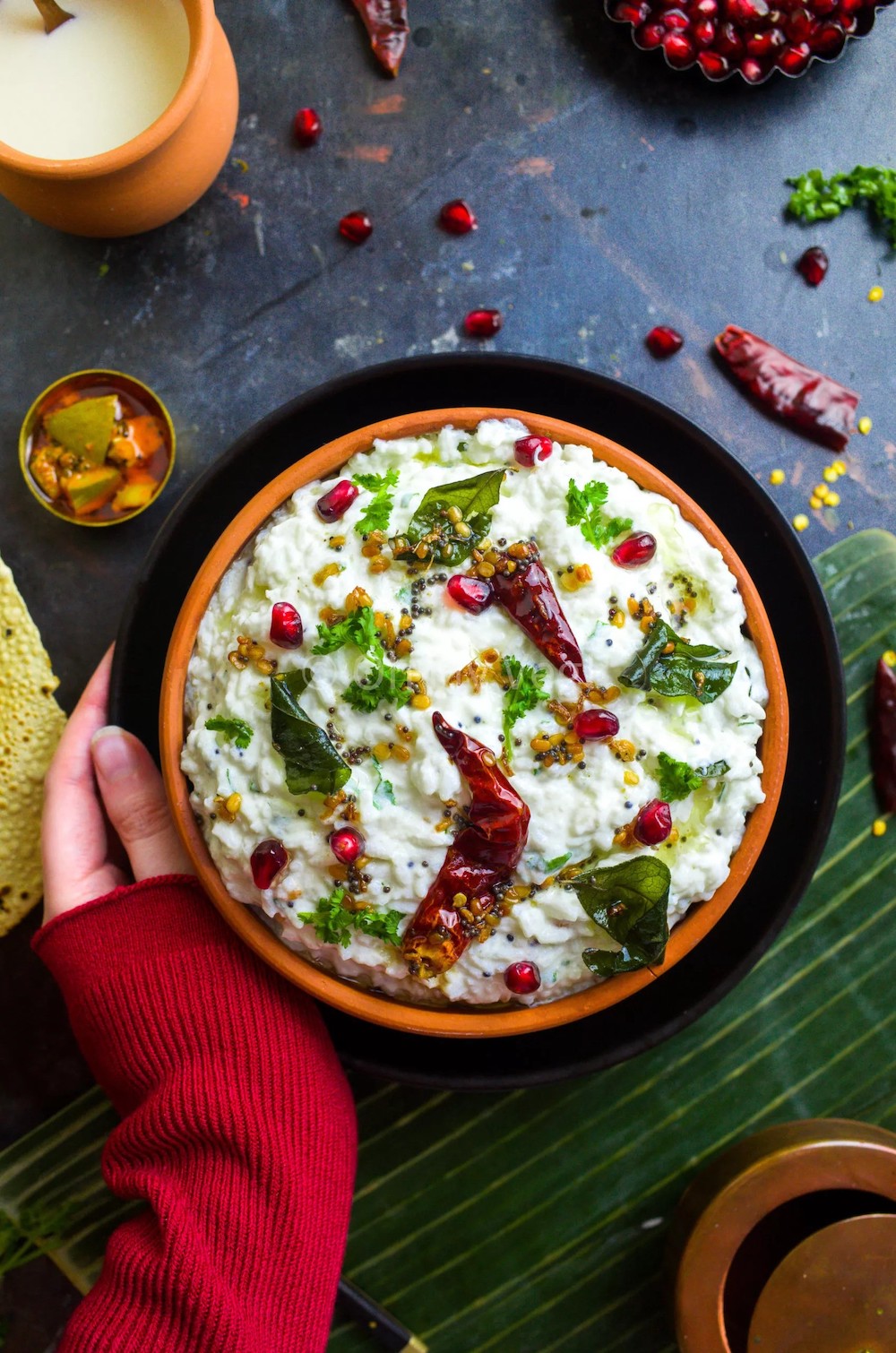
🥡 How to Store Mosaranna
Provided it’s stored in an airtight container, mosaranna (curd rice) can be refrigerated for up to four days.
However, I don’t recommend freezing curd rice as the texture will become unpleasant.
🌶️ Side Dish for Curd Rice
While mosaranna is inviting enough to eat straight from the bowl, I love serving some basic accompaniments to make the dish even more impressive.
My personal must-have side dishes for curd rice are crispy fried or roasted papad (poppadom). Basic urad papad is my go-to, but rice, sabudana, or even semolina papad are just as delicious.
Furthermore, why not go all out and choose a tangy pickle dish too? Raw mango pickle, lemon pickles, garlic pickles, or carrot pickle are all mouth-wateringly good!
✨ This Mosaranna Recipe Is:
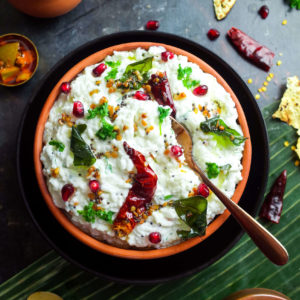
Mosaranna, South Indian Curd Rice Recipe
Ingredients
- 120 g sona masoori rice*
- 250 ml water to cook rice
- 300 g natural or Greek yoghurt
- 50 ml milk
- sea salt to taste
- 2 tablespoons groundnut oil
- ½ teaspoon black mustard seeds
- 1 teaspoon split urad dal
- ½ teaspoon ginger grated
- 6 fresh curry leaves
- 3 dried red chillies
- 1 pinch hing asafoetida
- 1 handful fresh coriander cilantro, chopped
- 1 handful fresh pomegranate arils to serve
Instructions
- Cook the rice.** Begin by thoroughly washing 120 g sona masoori rice* until the water runs clear. Once you've washed the rice, add it to a saucepan along with 250 ml water and a pinch of salt (optional). Cover the pan and cook on low heat for around 15 minutes, until the water has been absorbed and the rice is fluffy. For mosaranna, slightly overcooked rice is perfect!
- While the rice is still hot, use your hands or a dal ghotni (a whisk) to mash the rice. After mashing, let it cool to room temperature.
- Once the rice cools, add it to a large bowl. Next, mix in 300 g natural or Greek yoghurt and 50 ml milk to adjust the consistency. Add sea salt to taste.
- Add 2 tablespoons groundnut oil to a small tadka (tempering) pan over low heat. Once the oil heats, add ½ teaspoon black mustard seeds and wait until they pop. Once that happens, add 1 teaspoon split urad dal, ½ teaspoon ginger (minced), 6 fresh curry leaves, 3 dried red chillies, and 1 pinch hing. Mix well, and once the urad dal turns golden, switch off the heat.
- Pour the tempering into the curd rice and mix well.
- Garnish with 1 handful fresh coriander (chopped) and 1 handful fresh pomegranate arils. For the best flavour, cool the curd rice in the fridge for a few hours.




